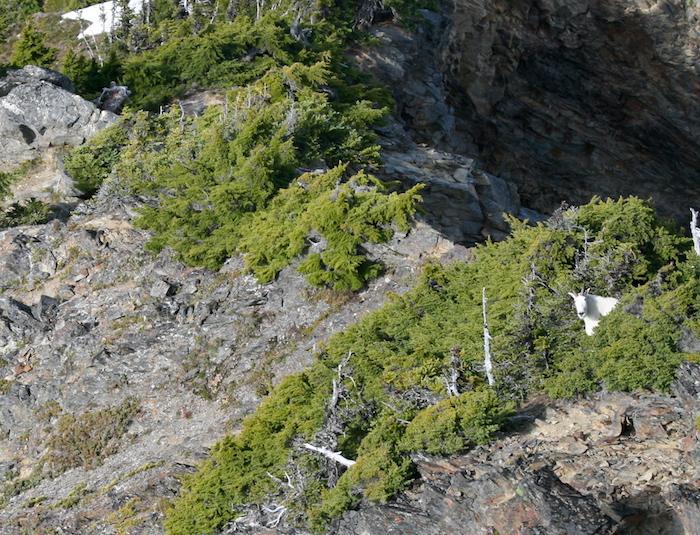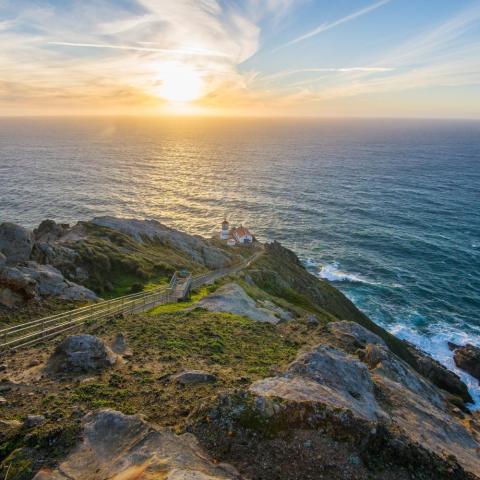
The public comment period on a proposal to remove nonnative mountain goats from Olympic National Park has been extended/NPS
Olympic National Park officials have extended the public comment period on a proposal to reduce mountain goat populations in their park until midnight Mountain Time on October 10.
A series of public meetings has already been held and to date there have been a little more than 600 pieces of correspondence received, according to a park release. The National Park Service, U.S. Forest Service, and Washington Department of Fish and Wildlife received a request for an extension to the comment period from state elected officials.
The park's mountain goat population has grown past 600 animals and could increase by 45 percent over the next five years if current reproduction trends continue and no efforts are made to blunt the population, according to a report from the U.S. Geological Survey.
The draft alternatives are described and analyzed in the Draft Mountain Goat Management Plan Environmental Impact Statement (EIS), which was released in late July and can be reviewed at this site. The plan’s purpose is to allow Olympic National Park to reduce or eliminate environmental impacts from non-native mountain goats, and reduce potential public safety issues associated with the goats’ presence in the park.
The plan alternatives include actions proposed to occur within Olympic National Park and Olympic National Forest, and associated actions proposed by the Washington Department of Fish & Wildlife to translocate mountain goats to the Mt. Baker-Snoqualmie and Okanogan Wenatchee National Forests in the Cascades.
This comment period also serves as the final designated comment period to provide specific written comments to be eligible to object to the U.S. Forest Service decisions on this project. The opportunity to comment ends 60 days following the date of the publication of the EPA Notice Of Availability in the Federal Register.
Copies of the draft EIS are also available at public libraries in Darrington, Enumclaw, Granite Falls, North Bend, Sedro-Woolley, Skykomish, Sultan, Aberdeen, Amanda Park, Hoquiam, Hoodsport, Forks, Port Angeles and Port Townsend. Copies of the draft EIS are also available at WDFW regional offices in Montesano and Mill Creek, as well as headquarters office in Olympia. Comments can be mailed or hand-delivered to: Superintendent, Olympic National Park, 600 East Park Avenue, Port Angeles, WA 98362. To ensure your comments are included in this process, they must be entered into the above referenced website or postmarked by October 10th.




 Support Essential Coverage of Essential Places
Support Essential Coverage of Essential Places







Comments
Consider allowing them to remain at hurricane ridge, which i love but is very disturbed by the high volume of visitors, but removing them from all other areas. At hirricane ridge, people can enjoy seeing them, but you can also educate about their effect on the landscape and unnatural presence there. E.g. Fence off an area to keep them out to show the difference.
"There have been a little more than 600 pieces of correspondence received" and "the park's mountain goat population has grown past 600 animals." Hmmm...
I should hope, if they are going to be shot, that the meat will be put to good use. Goat is delicious, and I'm sure that area food banks would welcome the fresh meat. And, just maybe, we can learn something about introducing a non-native species to an area in future.
Issue permits to hunters ( black powder, bow, ) and charge a significant fee. A win win: Park service can generate some revenue and the population can be reduced to a size compatible with the habitat and the use as a national park by humans.
"It would take an act of Congress to allow hunting in Olympic National Park, said Olympic National Park biologist Patti Happe. But, park officials do plan to offer volunteer marksmen the opportunity to kill goats.":
https://www.seattletimes.com/life/outdoors/the-hardest-hunt-ive-ever-don...
Wouldn't killing a number of mountain goats be just a temporary "solution" that will need to be repeated every so often?
I hope they are returned to their native habitat, in this case the Mt. Baker-Snoqualmie and Okanogan Wenatchee National Forests. Human beings caused this mess, not the mountain goats.